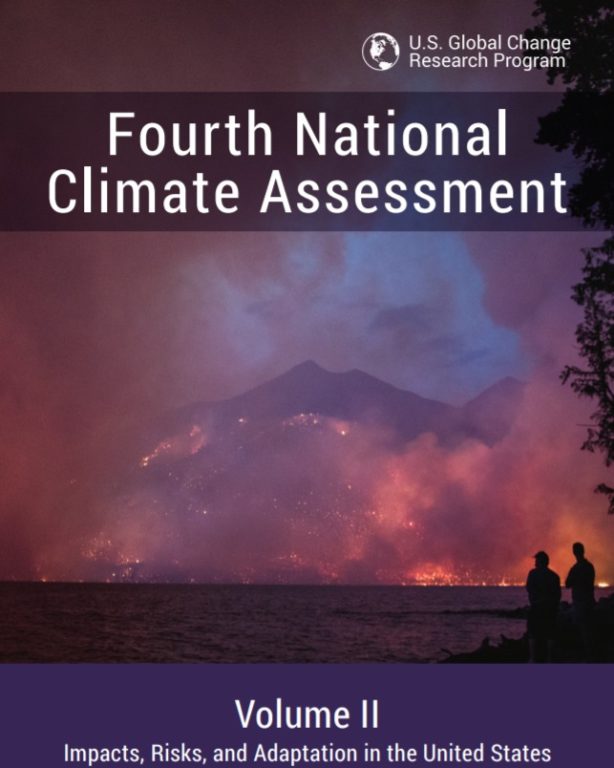
Nov 25 2018
In this week of Thanksgiving, I spent some time uncovering the history of Thanksgiving in America, and explored the findings from a major scientific report issued by 13 federal agencies on the state of climate change. (Time to put my Science degree amd summary skills to good use!)
As The World Turns
Lincoln’s decree
To satisfy my historical curiosity, I learned that Thanksgiving was first declared a national holiday in 1863 by President Abraham Lincoln. This last section of his declaration is particularly poignant, as the country was in the middle of its Civil War:
“I do therefore invite my fellow citizens in every part of the United States, and also those who are at sea and those who are sojourning in foreign lands, to set apart and observe the last Thursday of November next, as a day of Thanksgiving and Praise to our beneficent Father who dwelleth in the Heavens. And I recommend to them that while offering up the ascriptions justly due to Him for such singular deliverances and blessings, they do also, with humble penitence for our national perverseness and disobedience, commend to His tender care all those who have become widows, orphans, mourners or sufferers in the lamentable civil strife in which we are unavoidably engaged, and fervently implore the interposition of the Almighty Hand to heal the wounds of the nation and to restore it as soon as may be consistent with the Divine purposes to the full enjoyment of peace, harmony, tranquillity and Union.”
Climate change gravity
On Friday, 13 US federal agencies issued a 1,656-page scientific report titled “Fourth National Climate Assessment.” As the New York Times writes, the report predicts “that if significant steps are not taken to rein in global warming, the damage will knock as much as 10 percent off the size of the American economy by century’s end.”
Getting America’s political leaders into the same climate change boat has been a longstanding challenge. Special interest groups from the oil and gas industry, whose existence is threatened by the move to a carbon-free economy, combined with a skepticism of big government over-regulating industry in general (and enforcing environmental standards in particular), creates an uphill battle for policy change, even when the scientific community agrees that the human impact on climate change is real and needs to be tackled head on.
A narrative is emerging that holds some promise, one that covers issues of national security and economic prosperity. As early as 2015, retired Air Force Lt. Gen. Ken Eickmann, a senior research fellow at the University of Texas at Austin’s Energy Institute, labeled climate change as a “threat multiplier” to national security.
And the aforementioned Fourth National Climate Assessment report lists the 12 threats that the long arm of climate change continues to touch:
1. Communities – continued damage to our infrastructure and social systems, most keenly felt by lower-income and other marginalized groups
2. Economy – threats to industries that depend on natural resources and favorable climate conditions, increased import and export prices between countries, and growing losses in some economic sectors (to the tune of hundreds of billions of dollars by 2100)
3. Interconnected Impacts – the knock-on and cumulative impact across the systems we live on, like water resources, food and production, energy and transportation, public health, international trade, and national security
4. Actions to Reduce Risks – adapting to and mitigating the effects of (human impact on) climate change have started, and need to accelerate, providing immediate benefits to us citizens such as improving local air quality and economies
5. Water – water supplies (and the timing of those supplies) continue to be upended, making it harder to plan for ongoing industrial and agricultural use. (E.g. most US power plants rely on a steady supply of water for cooling their machinery.)
6. Health – rising temperatures in some regions, and more intense flooding or snowstorms in others, increase the potential for waterborne and foodborne diseases to spread; alter where disease-carrying insects and pests deposit the viruses for Zika, West Nile, and dengue; and will force communities to relocate to escape extreme weather conditions.
7. Indigenous Peoples – these communities rely most heavily on economies that are tied to the natural world and its resources – climate change is an existential threat to the way of life
8. Ecosystems and Ecosystem Services – the natural living world that surrounds us (our biodiversity), helps maintain the planet’s dynamic balance. Climate change disrupts these species’ natural migration patterns, affecting the location and quantity of wildlife we currently hunt, fish, or appreciate.
9. Agriculture and Food – changes to the crops/livestock we grow/breed, and where we can grow/breed them – which spell huge impacts on the agricultural sector.
10. Infrastructure – because most infrastructure was designed for kinder, gentler climate patterns, is cannot absorb the extra load and strain from climate change. This means more frequent and longer-lasting power outages, fuel shortages, and service disruptions; more erosion of coastal properties and infrastructure (from more flooding)
11. Oceans and Coasts – continued threat to the fishery industry (since rising water temperature and acidification decreases fish populations); financial losses and lasting damage to individuals, businesses and communities on the coast
12. Tourism & Recreation – disruption to the wilderness, recreational, cultural and vacation activities we’ve grown accustomed to.
Om Is Where The Heart Is
Capture –> formulate –> ship
As I move more deeply into creative self-expression through my words and business offerings, I spent some time this week looking for the best balance between scheduling my day, versus leaving time and space for the Muse to flow through me.
This is a lifelong journey for any creative professional. How do you generate the right conditions for that spark to show up, and how do you harness that spark into a finished product that you can ship/publish/share with others?
There needs to be time on the calendar for what looks, to others, like non-work ie. daydreaming or staring into space, doing chores while subconsciously noodling on a creative question you’ve posed to yourself etc. Then there’s a time for the sparks that emerge to be shaped into something tangible – a piece of writing, a prototype etc.
What I do know is that my creative process has evolved over time. I now crave more stilllness and solitude. That’s when a whisper of an idea pops into my mind, and I will notice it only if I have been still. And I’m designing ways to capture those whispers – notebooks (physical or virtual), a quick Google search to build on the initial spark etc. Each idea needs its own unique dose and application of oxygen, and I’m learning to honor those needs accordingly.
Sometimes an idea goes from spark to finished product in an evening. At other times, it takes years to be polished and prodded into shape.
But the best ideas always spring from my heart and soul. Those are the ones that skip to their own beat, the ones that gently tell me what they need, when they need it. My job is to lean in, to listen and to let them grow in their own time.
News and Views
In the next issue:
Next week, I’ll be attending a live event to hear an American civil rights icon speak. Exciting stuff – am sure I’ll have impressions to share!
Till then…
Live well and lead large – Maya

